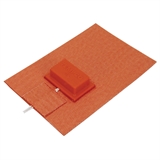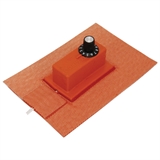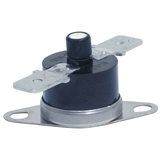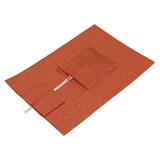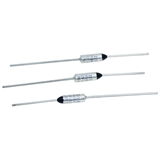
Snap Action Thermostat – Automatic Reset
Quick cutout on rise to temperature. The contacts will open on rise when the temperature increases to the snap point of the calibrated bimetal disc.
Setpoint (opens): available from 50 to 450°F in 10°F increments (most thermostats close 20 to 30°F below setpoint)
Electrical Ratings: 125 Vac, 15 Amp, 1875W, 250 Vac, 10 Amp, 2500W
Minimum Heater Width: 1.312″
Adjustable Thermostat
Adjustable thermostats allow the user to dial-in a specific temperature and attain a desired result. The thermostat is enclosed in a molded silicone rubber housing and permanently attached to the heater. The adjustment shaft extends through a pre-formed hole. A high temperature knob is included.
Amps: 12.5A @ 125V, 6.5 A @ 250V
Watts: 1500W @ 120V, 1560W @ 240V
Adjustment Ranges Available:
- 50 to 425°F (10 to 218°C)
- 90 to 140°F (32 to 60°C)
- 100 to 190°F (38 to 88°C)
- 70 to 190°F (21 to 88°C)
- 50 to 160°F (10 to 71°C)
- 70 to 140°F (21 to 60°C)
Minimum Heater Width: 1.75″ (44.5 mm)
Creep Action Thermostat
Sustained response, and a slow cutout at the trip point. The creep action thermostat has a slow make/slow break action around setpoint.
Setpoint (opens): available in a limited selection from 50 to 300°F in 10°F increments. Consult Tempco.
Electrical Ratings: 120 Vac, 12 Amp, 1440W, 240 Vac, 6 Amp, 1440W
Thermal Fusing
Thermal fuses / cutoffs are used as high limit protection devices to guard the object being heated from dangerous temperatures in the event of a primary control device failure. The thermal fuse can be mounted using various methods depending on other options. If the heater does not have a thermostat, the thermal fuse would be mounted under the lead exit patch. If used in conjunction with a thermostat, it could be mounted under the thermostat cover.

